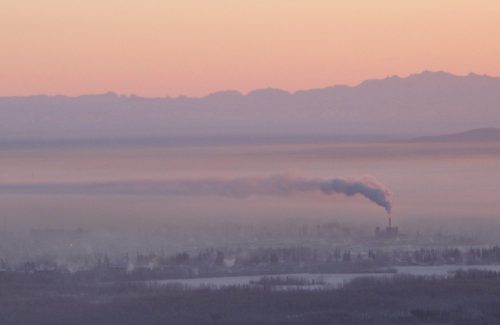Washington D.C. – Despite reductions in US air pollution over the past several decades, resulting from the combined efforts of government, nonprofit and industrial sectors, concentrations of both fine particles and ozone remain a public health concern, particularly in urban areas.
A new study by economists, scientists, and modelers at the U.S. Environmental Protection Agency (EPA) shows that levels of fine particulate matter (PM2.5) and ozone (O3) pose significant risks to public health, including an increased risk of mortality. These findings could be used to inform policy decisions about approaches to reducing key pollutants and thereby improve health outcomes, particularly in urban areas.
The analysis, entitled “Estimating the National Public Health Burden Associated with Exposure to Ambient PM2.5 and Ozone,” was co-authored by EPA’s Neal Fann, Amy Lamson, Susan Anenberg, Karen Wesson, David Risley, and Bryan Hubbell. Their research findings are published in the January 2012 issue of the journal Risk Analysis, published by the Society for Risk Analysis.
The study evaluated data using an air quality model developed by EPA—the Community Multiscale Air Quality (CMAQ) model—in conjunction with several years of monitoring data to create high-resolution geographic maps of air quality. Using this high resolution data, the researchers discovered that thousands of illnesses and emergency room visits and 130,000–340,000 premature deaths are attributable to recent levels of PM2.5 and O3. Fine particle pollution or PM2.5 describes particulate matter that is 2.5 micrometers in diameter or smaller or about 1/30th the diameter of a human hair.
Furthermore, the researchers learned that the geographic and age distribution associated with this health risk is not shared equally—major metropolitan areas such as New York, Pittsburgh, Houston and Los Angeles exhibit the largest number of estimated premature deaths due to high levels of PM2.5 and O3.
Previously, the World Health Organization’s Global Burden of Disease (GBD) found that urban levels of PM2.5 were associated with 28,000 premature mortalities in the United States, Canada, and Cuba. Another group of scientists used a chemical transport model to simulate pollutant concentrations in rural and urban areas, attributing 35,000 premature mortalities to O3-induced respiratory illness and 141,000 to PM2.5-induced cardiopulmonary and lung cancer disease.
In this study, the authors carefully gathered geographic measurements by using refined methods that were more accurate. They considered data that had been gleaned from models in combination with data that had been collected over a single year (2005) by air monitoring equipment. The researchers used this data fusion method to generate a reliable representation of PM2.5 and O3 concentrations in 2005. The authors note, however, that PM2.5 air concentrations have improved since 2005. They cite economic and meteorological trends as potentially strong contributing factors to the improvements in air quality. Nonetheless, they noted that when this information is accounted for in the models, the PM2.5 concentrations continue to exacerbate the public health burden.
The study indicates that premature mortality attributable to poor air quality is not associated only with those already near death (sometimes called “mortality displacement”). These findings are in agreement with many other studies, showing that improved air quality has yielded a direct positive impact on life expectancy and does not affect only those individuals near the end of life.
In addition, the authors indicated that their analysis did not take into account planned pollution reduction efforts. “Our results do not reflect the important air quality improvements expected to result from an array of U.S. EPA and state air quality management programs that will be implemented in the near future” to reduce emissions from nonroad diesel engines, vehicles, and factories, according to the article.
Risk Analysis: An International Journal is published by the nonprofit Society for Risk Analysis(SRA). SRA is a multidisciplinary, interdisciplinary, scholarly, international society that provides an open forum for all those who are interested in risk analysis. Risk analysis is broadly defined to include risk assessment, risk characterization, risk communication, risk management, and policy relating to risk, in the context of risks of concern to individuals, to public and private sector organizations, and to society at a local, regional, national, or global level. www.sra.org
Contact: Steve Gibb, 202.422.5425 skgibb@aol.com or Enesta Jones at jones.enesta@epa.gov. The full article is available here: https://onlinelibrary.wiley.com/doi/10.1111/j.1539-6924.2011.01630.x/full
Source: Society for Risk Analysis (SRA)







